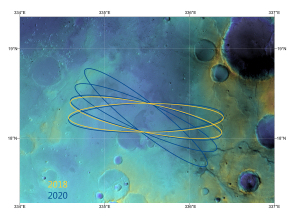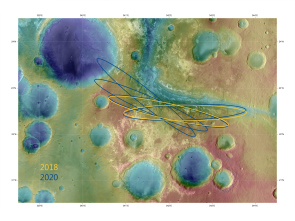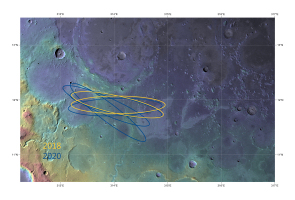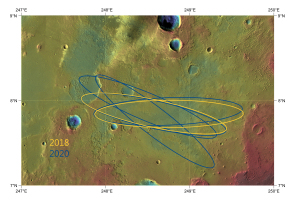ExoMars 2018: landing site search to narrow
9 October 2015
Later this month, scientists and engineers will meet to choose which two, of four possible landing sites for the ExoMars 2018 mission, should be retained as candidates.
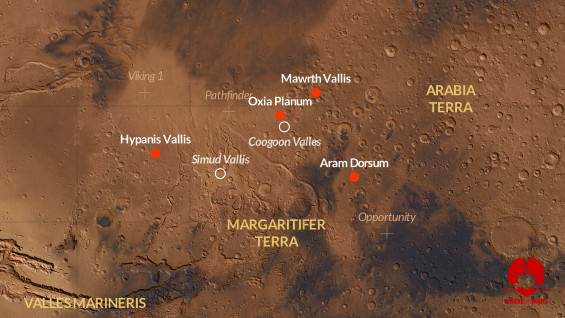 |
| Location of four candidate landing sites for ExoMars 2018, depicted in the Where On Mars? visualisation tool. Credit: ESA/CartoDB |
ExoMars is a joint two-mission endeavour between ESA and Russia's Roscosmos space agency. The Trace Gas Orbiter and an entry, descent and landing demonstrator module, known as Schiaparelli, will be launched in March 2016, arriving at Mars seven months later. The rover and surface platform will depart in 2018, with touchdown on Mars in 2019.
The search for a suitable landing site for the second mission began in December 2013, when the science community was asked to propose candidates. In October 2014, four candidates were chosen by the Landing Site Selection Working Group. Meeting at the European Space Research and Technology Centre (ESTEC) in the Netherlands this month, experts must select the two candidate sites that conform best to both the engineering constraints of descent and landing, and the best possible scientific return of the mission.
The rover will search for evidence of martian life, past or present, in an area with ancient rocks where liquid water was once abundant. A drill on the rover is capable of extracting samples from up to 2m below the surface, a crucial aspect given that the present-day surface of Mars is a hostile place for living organisms. By searching underground, the rover has more chance of finding preserved evidence.
Scientists believe that primitive life could have gained a foothold when the martian surface environment was wetter, prior to 3.6 billion years ago. Buried or recently exhumed sedimentary deposits thus offer the best window into this important period of Mars history.
The four sites currently under discussion – Mawrth Vallis, Oxia Planum, Hypanis Vallis and Aram Dorsum – are all located relatively close to the martian equator and to each other. All sites show evidence of having been influenced by water in the past, with large exposures of ancient rocks now accessible at the surface.
Two of the four candidate sites will be down-selected during the 20-21 October meeting for continued analysis. The final decision regarding which of these two sites will be the primary landing site and which the backup will be made during 2017.
An announcement of the two sites to be carried forward will be published on these pages following the final decision on 21 October.
Details of the upcoming workshop, which will be held at ESA's ESTEC site in the Netherlands on 20 and 21 October, can be found here.
Explore the ExoMars landing sites using this interactive tool: whereonmars.co

